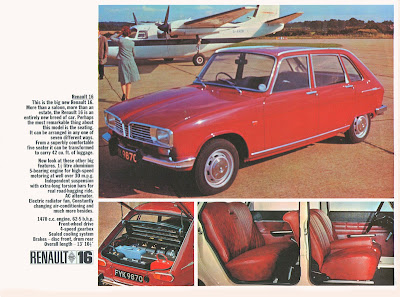Among the most notorious flops in American television history, “Supertrain” is a 1979 science fiction adventure series I have known about for years, but only tried to watch recently, the details of its misconception being more interesting than the final show itself.
The “Supertrain” itself is a high-speed, pullman-style luxury train driven by no less than nuclear power and a steam turbine. This is not as wild as it sounds: the English Electric GT3 was a prototype steam turbine train, instead powered by gas, but didn’t move beyond test runs in the early 1960s, never carrying any passengers.
“Supertrain” carried more than a dining car: its double-decker carriages had hotel-like cabins, a gym, restaurant, infirmary, gift shop, dance floor and swimming pool. The opening scene of the first episode implies this is the future of train travel, not long after Amtrak had been formed to save US passenger routes in real life.
The sets were gargantuan, in both size and cost. Built at the MGM studio lot (now Sony Pictures Studios), a reported $6 million was spent constructing a full-size, non-moving train and interior sets, rising to $10 million with the completion of two scale-model trains for use in exterior shots. It is usually accepted that "Supertrain" was so expensive, its failure nearly bankrupted NBC, but failures of other shows, and lost advertising revenue after its scaling back of its coverage of the 1980 Moscow Olympic Games following the United States' boycott, makes the show only one part of a larger-scale problem.
The full-size set had hydraulics to aid chase scenes on the train’s roof, pushing people back if the train accelerated, while a further copy of the roof was fixed to top of real train carriages, for stunts that needed a real moving train. Meanwhile, the interior is very 1970s in design, looking not unlike a cruise ship of the time, with velour carpeting, lots of lights and plenty of opportunity to wander the corridors with an alcoholic drink in your hand.
I have not mentioned the premise of the show so far because it is hardly worth the point. What initially captured me about the show were the opening titles, with Bob Cobert’s aggressively disco theme laid over various shots of the train and of its crew, forming the main cast. Watching the opening episode reveals a set of interweaving storylines featuring the passengers and their romances, a set-up relying on a parade of guest performers, and the crew interacting with them.
“Supertrain” is essentially “The Love Boat” but set on a train, a fact recognised at the time, but the show’s producer Dan Curtis, creator of the seminal gothic soap opera “Dark Shadows”, seemed to be more interested in photographing the train. Curtis was replaced after five episodes, and “Supertrain” was steered into being more comedic, adding a laugh track to its ninth episode before the show was cancelled.
“Supertrain” lasted for only nine episodes from February to May 1979. Creator credit went to crime and mystery writer Donald E. Westlake, and to Earl W. Wallace, former head writer of the Western TV series “Gunsmoke”, and later scriptwriter of the Harrison Ford-starring crime thriller “Witness”. Their only writing credit for “Supertrain” was the opening double-length episode, retitled to “Express to Terror” when released later as a standalone film to try recouping its costs – with Keenan Wynn, Steve Lawrence, Fred Williamson and Vicki Lawrence as guest stars, they become a solid cast for a 1970s TV drama. The following episode starred Dick Van Dyke as a hitman.




